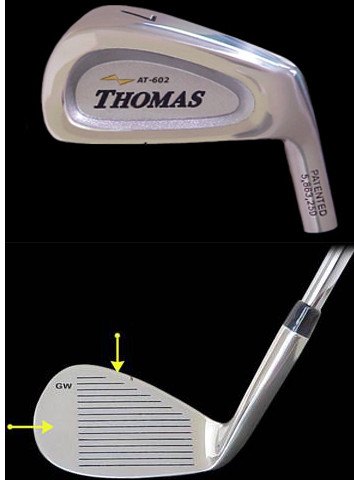
In golf, “blade irons” refers to a specific type of golf club design, particularly the design of the clubhead. Blade irons are characterized by a classic, traditional appearance and are typically favored by skilled and experienced golfers.
The term “blade” is used because the clubhead has a thin, flat, and compact profile, resembling the shape of a blade. Blade irons have a smaller sweet spot compared to other clubhead designs, such as cavity-back irons or game-improvement irons.
The key features of blade irons include:
- Minimal Offset: Blade irons have little to no offset, which means that the leading edge of the clubface aligns almost directly with the shaft. This design allows for more precise shot-making and better feedback on impact.
- Thin Topline: Blade irons have a thin top line when viewed from above, which contributes to a sleek and clean look preferred by many golf purists.
- Muscle Back: The back of the clubhead is typically solid and compact, without any cavity or perimeter weighting. This design places the majority of the clubhead's weight directly behind the center of the clubface, offering enhanced shot-shaping control.
- Lower Forgiveness: Due to their compact design and smaller sweet spot, blade irons are less forgiving on off-center strikes. Mishits tend to result in less distance and accuracy compared to cavity-back or game-improvement irons.
Blade irons require a high level of skill and consistency to use effectively. They are often preferred by professional golfers and low-handicap players who prioritize shot workability, feedback, and a more traditional look and feel. However, they may be less suitable for golfers who require more forgiveness and assistance in achieving optimal ball flight and distance
The term refers to irons with small heads, often made from forged steel, with few if any “game-improvement” features such as perimeter weighting. Blades are favored by many professional and low-handicap golfers, who believe the clubs make it easier to shape shots in different directions. Blade players also prefer the sleek, traditional appearance as well as the distinctive feel of these irons.
Since blades often have a smaller sweet spot than perimeter-weighted clubs, they are more difficult for higher-handicap golfers to hit solidly. Skilled golfers believe the smaller margin for error of a blade iron delivers better feedback to the hands on mishit shots; this awareness allows the player to adjust to specific swing flaws which cause poor shots.





